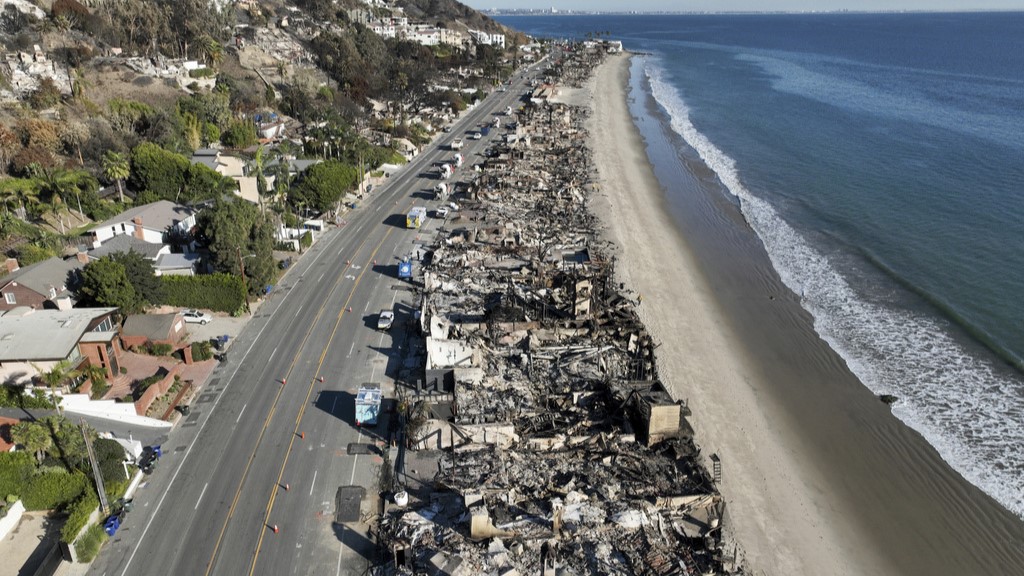Climate report details 3 factors fueling CA's wildfire crisis and increase in 'fire weather days'

SAN FRANCISCO (KGO) -- For climate researcher Kaitlyn Weber, the fires roaring through the gold country are both a personal and professional challenge.
"To see those pictures that first came out from the Caldor Fire it was very shocking. It was hard, it was heart wrenching," she said.
Weber grew up in and around Pollock Pines and Happy Valley, just down the road from the community of Grizzly Flats, which has now been left in ashes. But in the months leading up to the fire, she was working to understand the forces that can help unleash this kind of devastation, a combination of factors collectively known as fire weather.
"So a fire weather day has three elements happening altogether. You have hot temperatures, you have dry air, and you have very fast winds," explained Weber.
VIDEO: How to prepare for a wildfire evacuation

Weber and colleague Andy Pershing, Ph.D., are with the weather nonprofit Climate Central. In a newly released report, the group documented the increase in fire weather days, driven in part by factors such as climate change.
"And the big story here, and this was a bit of a surprise for me, it's really the dryness. It is the lack of humidity in the air that's leading to elevated fire risk throughout the west, but especially in California," said Pershing.
The study tracked data from individual weather stations, stretching back to the 1970s. The data was broken down into areas with similar climate features, boundaries known as climate divisions. And of the top hotspots, the study singled out two in Northern California experiencing the some of the highest percentage increases in the number of fire days. A large swath, east of the Bay Area that includes towns like Grizzly Flats and Paradise and the epicenters of fires with now familiar names like Caldor and Dixie.
RELATED: Lake Tahoe surrounded by thick, apocalyptic layer of smoke from California wildfires
"We've seen a major change in the conditions. What we're seeing today is what we're seeing before," said Weber.
She says that percentage change can add up to a one to two weeks of extra fire days per year depending on location. And while the specific cause of a fire can always vary, factors like the drought and climate change have likely played a part in making the landscape far more volatile.
Decades of change that researcher Kaitlyn Weber can now track with both measurements along with her childhood memories.
"It means these weather conditions are coming together more frequently, and that's putting us in a lot more danger than we would be if the weather was different," she said.
The study also found that long-term warming is drying out soil in parts of California. That's led to plants and forests releasing less moisture into the atmosphere contributing to fire weather.
Take a look at all of ABC7's Building a Better Bay Area stories and videos here.
RELATED STORIES & VIDEOS:
- Map shows riskiest areas in California for damaging wildfires
- How bad will CA's fire season be? Here's what we know, what we don't
- How to prepare for a wildfire evacuation
- How to prepare your pets in case of disaster
- How to make a pet carrier in case of emergency
- Most destructive California wildfires in history
- The deadliest wildfires in California history
- Live: Track Bay Area air quality levels
- How are wildfires started? A look at the causes of some of the worst in California history
- The difference between containing and controlling a wildfire
- What's in wildfire smoke? How it can impact your health
- What are the diablo winds and how can they influence Northern California wildfires?
- What you need to know about Santa Ana winds and California wildfires
- Safety tips to remember when returning home after wildfire
- How to pick a mask for protection during a wildfire
- Red flag warning: What to do during dangerous fire conditions
- Everything to know about red flame retardant dropped during wildfires
- What happens to animals during wildfires?
- How to drive safely during a power outage
- How wildfires create a serious threat for flooding and mudflows
- These aircraft are on the front lines of the fight against California wildfires
a










